In pictures: Paul Reed Smith's first PRS Custom guitar
30 years of PRS: Up-close with the original prototype
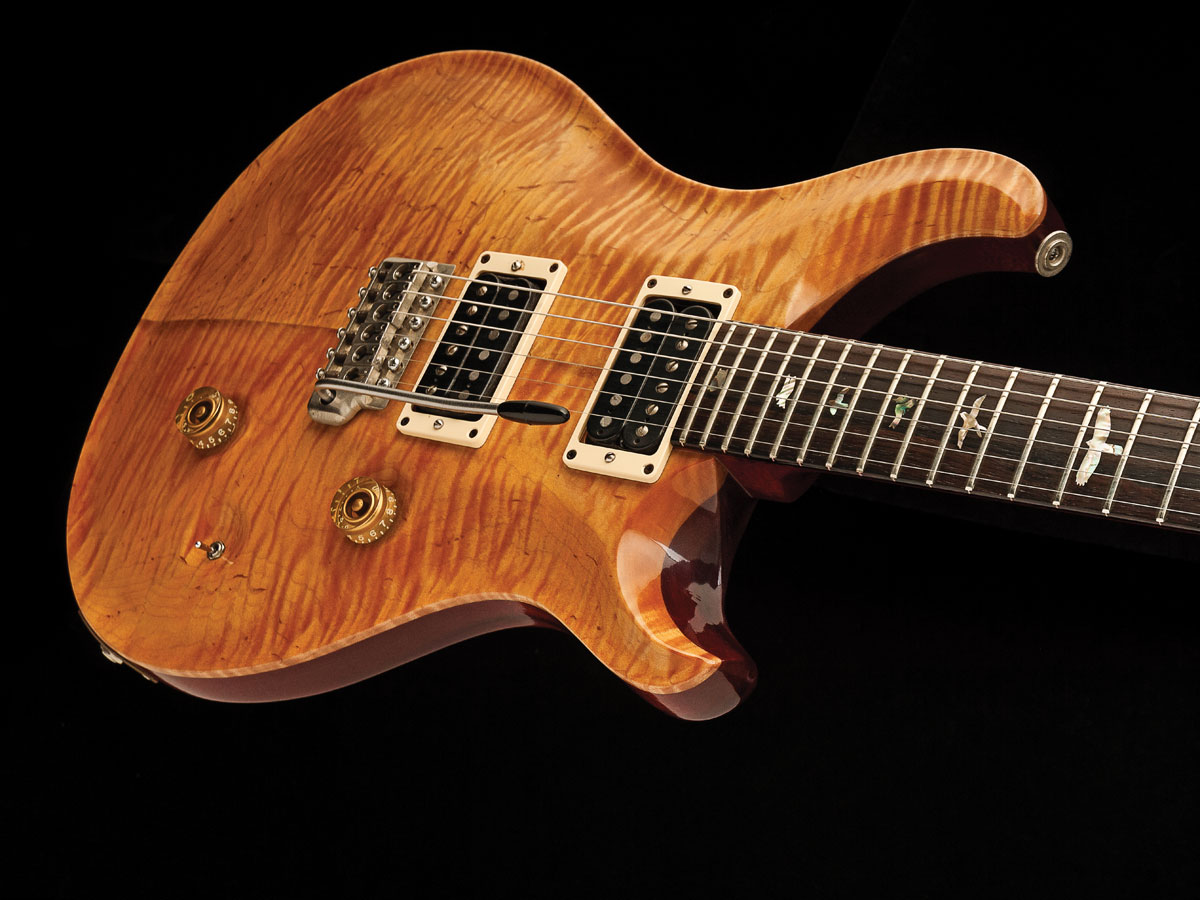
Introduction
The original prototype of the PRS Custom, built in 1984 by Paul Reed Smith’s own fair hand, is a lovingly-crafted, oft-imitated guitar.
The PRS Custom, a still-to-be-beaten hybrid of the world’s most classic solidbodies, the Gibson Les Paul and the Fender Stratocaster, is one of the few modern solidbodies that can rightly be called a ‘classic’ alongside those guitars that fuelled its design. It’s all the more extraordinary that Paul Reed Smith was only 28 at the time it was created and had never had a single lesson in how to build an electric guitar.
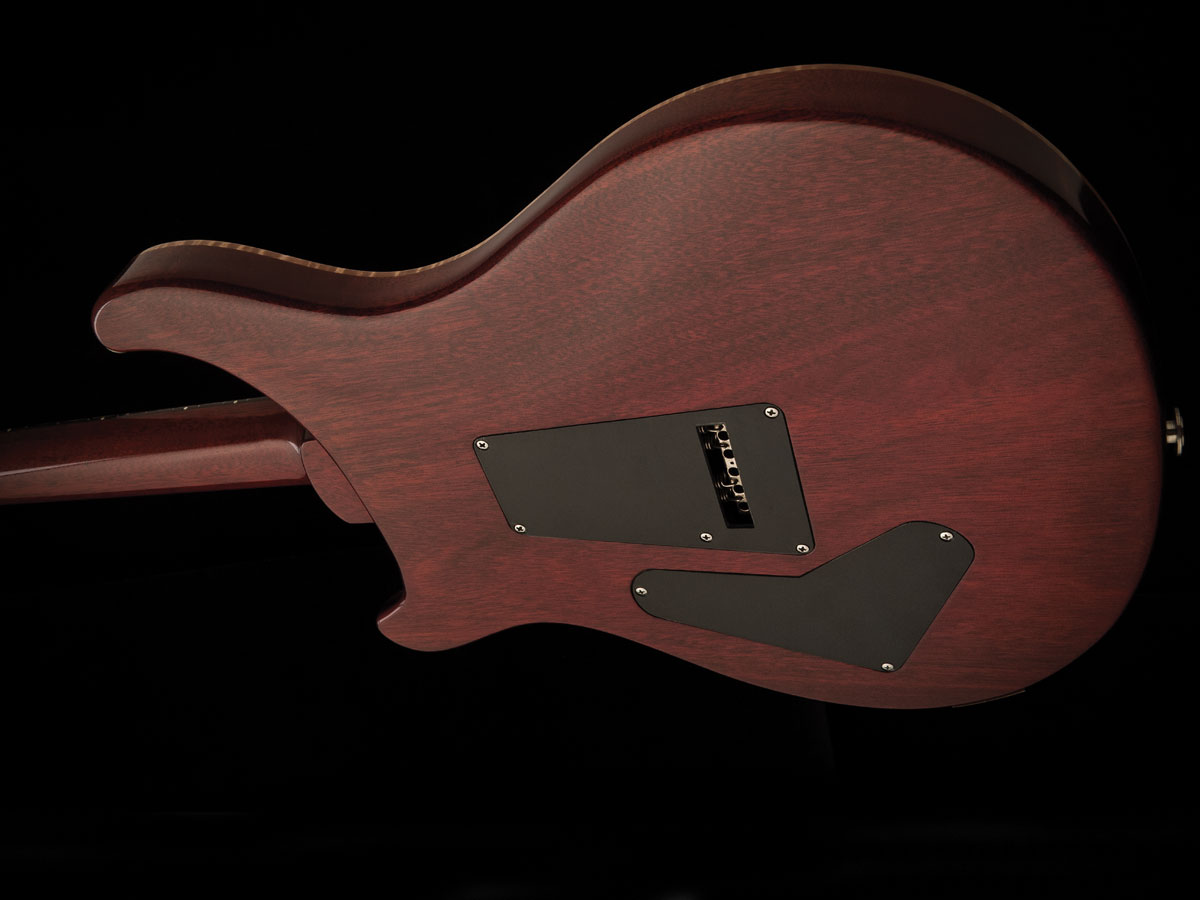
Ch-ch-ch-changes
30 years on, he remains an extraordinary fellow: part guitar-making boffin, part businessman and 100 per cent a key figure in the development of the electric plank - as influential to makers of the past 30 years as his original ‘teachers’, Leo Fender and Ted McCarty, were to him.
Looking at the prototype of the Custom that remains in the PRS archive at its rather sizable Kent Island, Stevensville, factory a few weeks before the end of 2014, it looks as though little has changed. But anyone who has followed PRS’s rise knows differently: everything has changed... and it’s not for the worse.
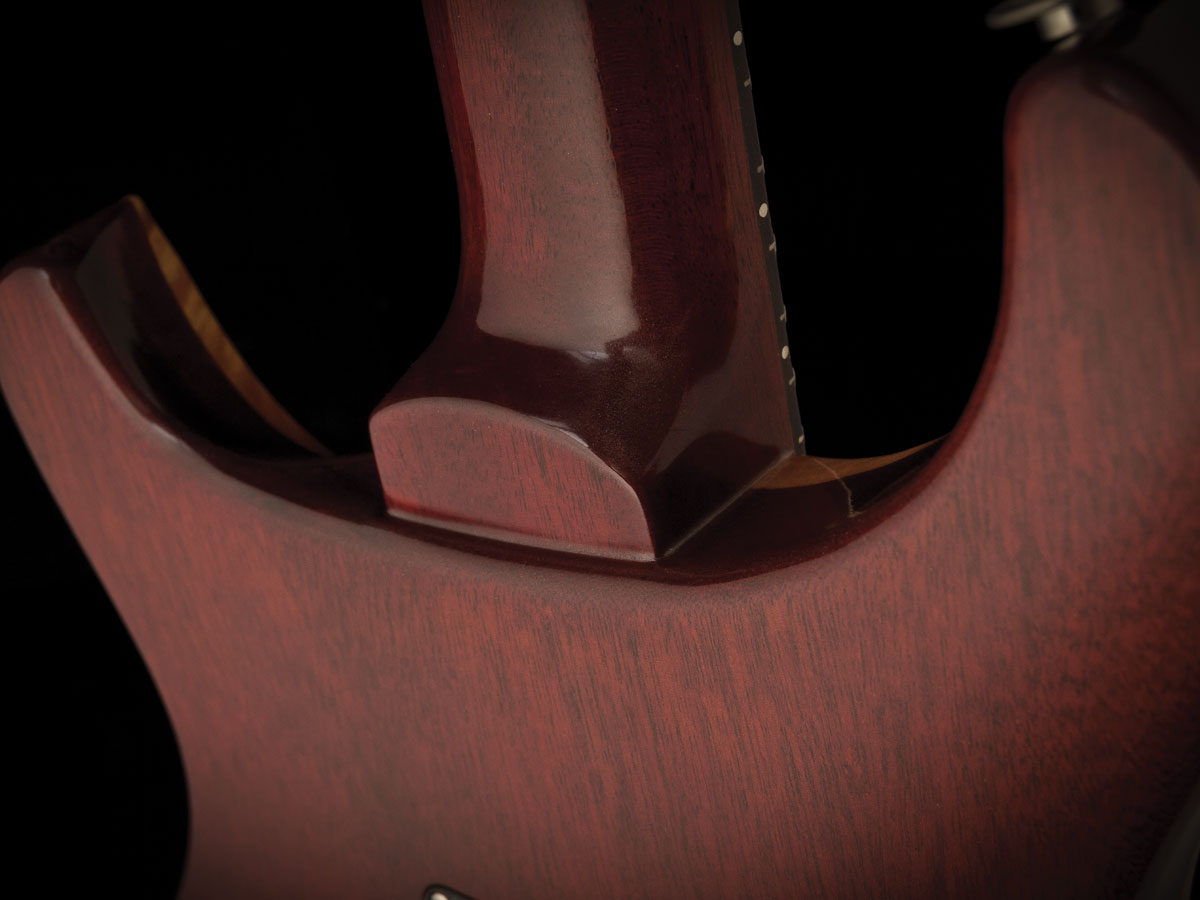
Simple elegance
Handmade in Smith’s original workshop, in 1984 - a year before he opened his factory for business - the old Custom prototype has a wonderfully personal feel.
Today, it’s unquestionably a fine piece, yet the modern Custom is so much more refined in virtually every detail. We suggest it looks even more elegant than the not-unelegant original.
“That would be very nice, but I was hoping you’d say they were equal, not that one is better. That guitar,” says Paul, pointing to the prototype, “Is worth a lot of money now. It’s got a lot of elegance to it by itself, right? We’re looking at the prototype to this entire business, so it’s gotta be worth some coin.”
And, yes, the guitars Paul hand made with a couple of employees, especially the maple-topped one-offs from the early 80s, have to be among the most highly-prized ‘vintage’ pieces made after 1965. Even the early-year production models have been elevated way beyond their original cost.
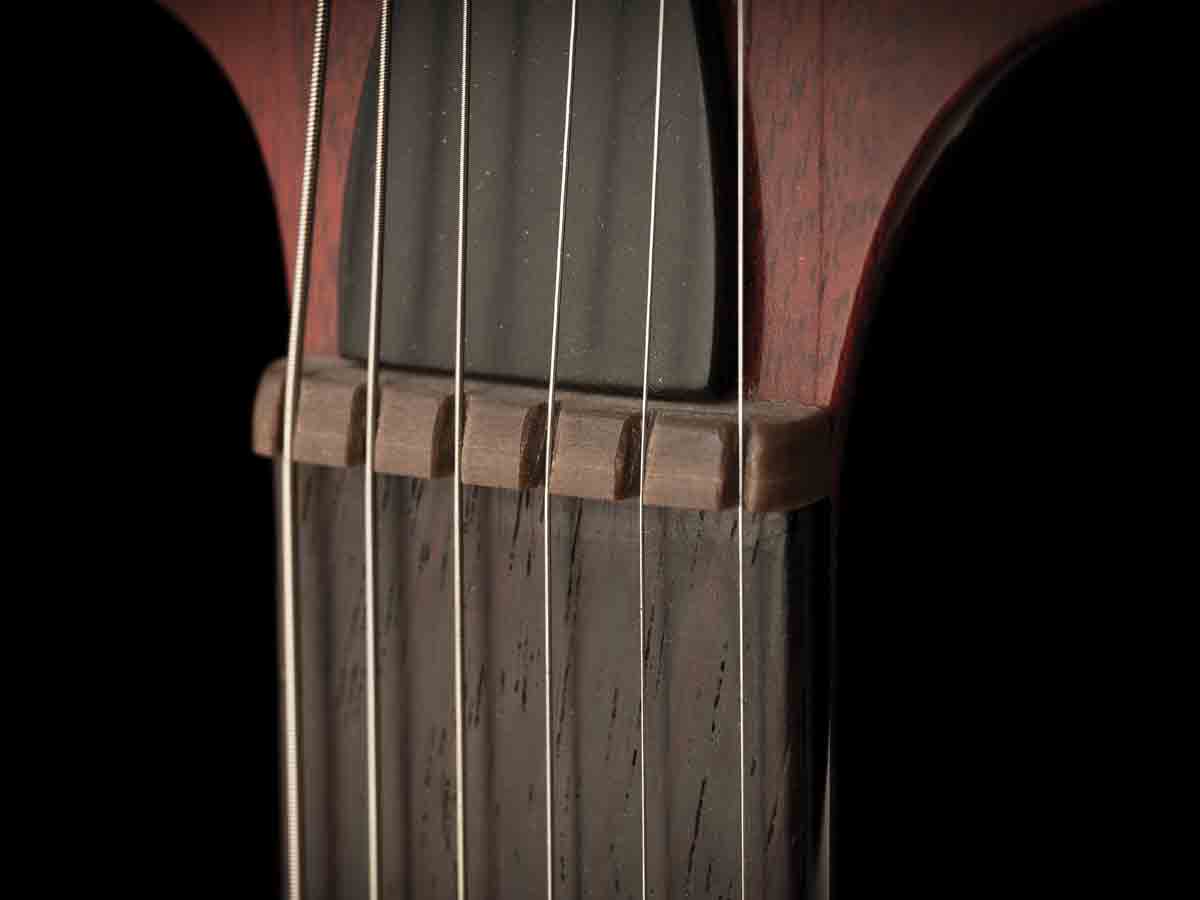
Losing his head
We start comparing the two guitars. Has the headstock shape changed, we wonder?
“No. It’s now closer into the nut than it was originally and it’s thinner by a few thou... the back angle is different, yes, we weren’t getting enough string break over the nut, so we wanted more of the sound to originate at the front of the nut.
"We used to have two angles, one for tremolo guitars and one for Stoptail guitars, but we made it universal. We never stated it as an angle, but it’s about a drop of one inch over a six-inch length.”
The original’s nut seems very different. “Yes, originally the nut was a Delrin. This here,” he says, pointing to the 30th’s nut, “is a bearing plastic loaded with bronze and glass powder: we got the nuts to sound better. Originally, too, the truss rod was a single-action type; it’s been double-action for a long time.”
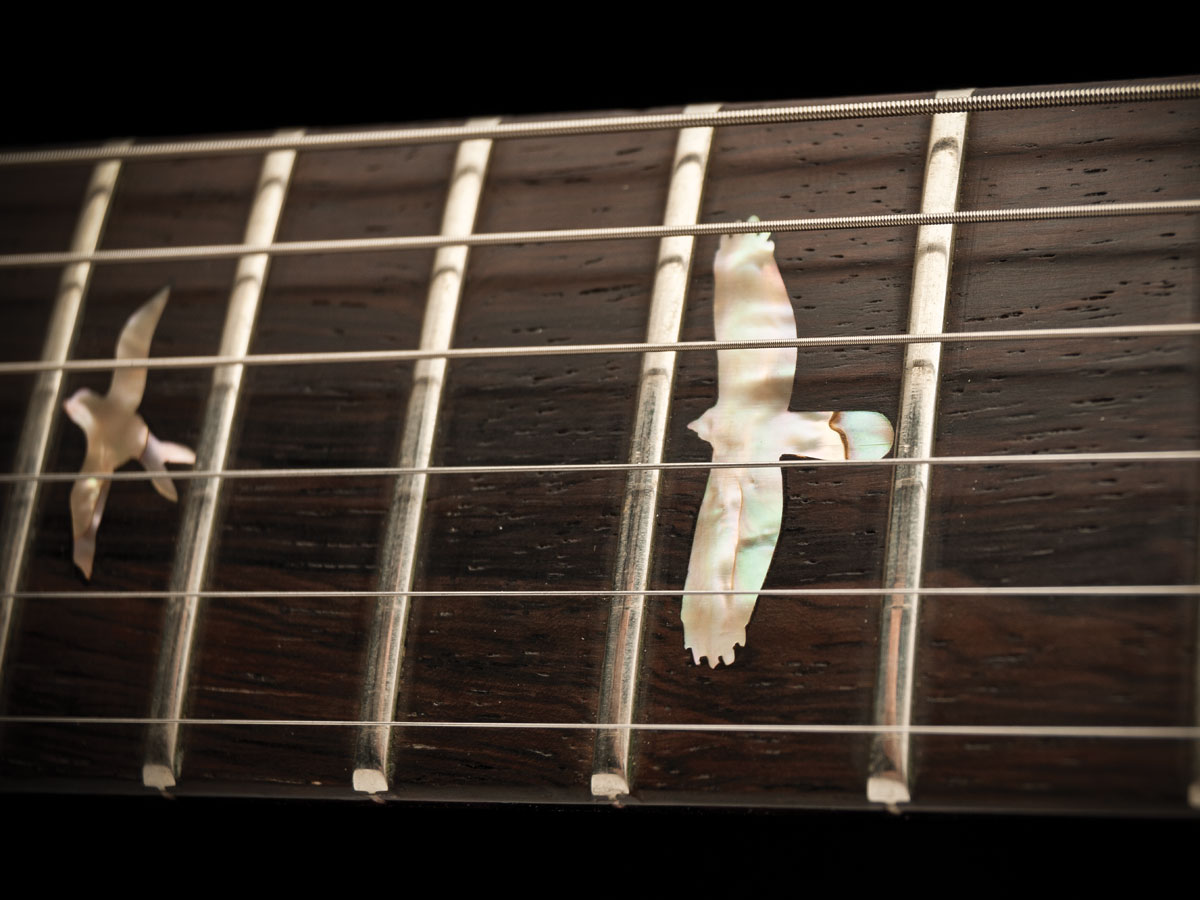
Do fret
“We still use the same fretwire we’ve always used,” notes Paul. “It wasn’t on the prototype because we hadn’t come up with it then. It’s in-between medium and jumbo-size wire. I split the difference so people wouldn’t refret their guitars unless they needed to because of wear.”
More obviously, the new top carve is different - though not a million miles away from the prototype. “In fact, the Private Stock 30th Anniversary Custom has what we’re calling a ‘retro’ carve - just like this prototype.” It’s as if the ‘hills’ of the carving are a little higher and the ‘valleys’ a little deeper.
“Originally, it was really difficult to train a hand sander to make the edge so sharp and not cut it down, so we made the carve a little less radical, I guess. It’s still very contoured compared to many other people’s carved tops. It was always more like the contouring on a violin than the carve of other electric guitars.”
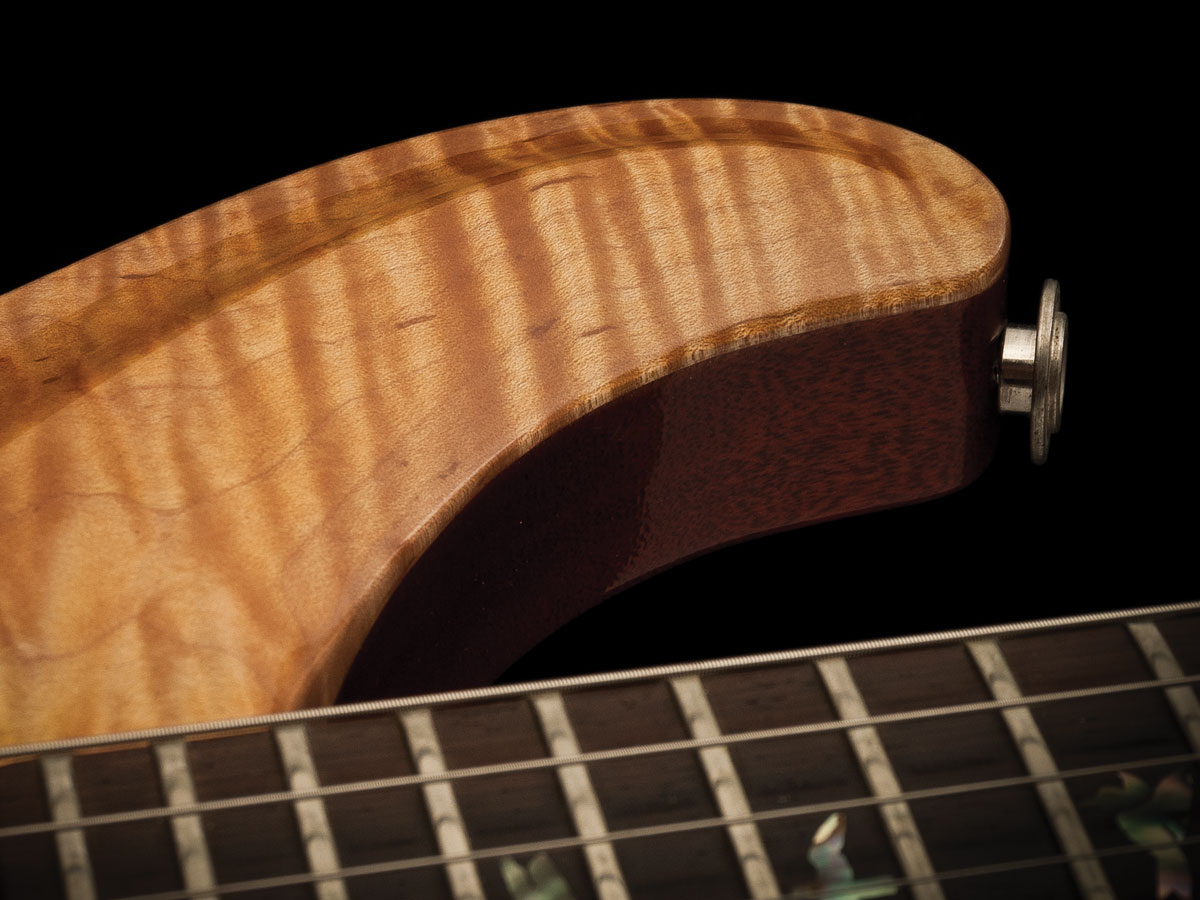
100% natural
Another PRS feature that’s joined the lexicon of modern guitar making is the natural edge of the maple top, on certain colours, that imitates a plastic edge binding.
“I remember the exact day I did it,” says Paul. “It was the guitar for Howard Leese, what he calls the ‘Golden Eagle’. It was the first one where I didn’t stain the edge of the top; I left that unstained, and the natural maple edge looked like binding. I remember very clearly doing that.
"Putting plastic around the edge of a guitar seemed like a whole waste of time. So long as you can control the thickness of the top, at the edge, it works. I was trying to save work. Can you imagine how many tops we’d have had to bind if we didn’t do this? And look, on the original prototype the ‘binding’ seems thinner because the top carve was deeper.”

Stained
PRS’s finishing and colour stains have, again, been copied by many makers - new and old. The new V12 finish came online in 2008, but that wouldn’t have been possible back in the mid-80s, would it?
“The stuff was available but the understanding wasn’t,” reckons Paul. “It turns out these guys that made the original finish were really good chemists. It was the same stuff they used on Alembic and Tobias basses. It felt like nitro, but was impervious to melting: it was good stuff.
“The biggest problem has been the bumpers on cars,” says Smith of the change in finish materials over the past decades.
“They used to be made from metal, but when they made them out of rubber the paint had to be pliable - so if you bump into something, it didn’t crack the paint.
"That was the worst day in guitar-making history, in my opinion, because all the paint manufacturers started to add flexible plasticiser to all their paint so those bumpers wouldn’t crack. That’s no good for a musical instrument. We finally have a chemist who is building us paints we really like. I actually liked what was on the original guitars a lot, but this feels very close.”

Don't look back
Many makers are looking back to past triumphs, and it’s perhaps a little surprising that PRS has never reissued, for example, a replica of this original guitar in its first-year specification.
“If you believe what you made 30 years ago is better than what you make today then, yes, you produce that in small numbers and at a high price and call it a reissue,” comments PRS president Jack Higginbotham.
“But if you think what you make today is better than what you did make, why would you ever do it? Yes, there’s a sentimental, ‘I’ve got my ’85 Custom and I love it’; I love the neck shape on that guitar (the ’84 prototype).
"I actually made those neck shapes when I started at PRS but, as a guitar, it has flaws that are just inherent and over the last 30 years, one at a time, we’ve removed.
"You remember the original Standard Treble and Standard Bass pickups? There aren’t many around because people pulled them out and replaced them. People aren’t doing that with our current pickups: in fact, they’re trying to find them to put into their other instruments.”
Perhaps old isn’t always best. Either way, it’s hard to dispute, and as our 30th Anniversary Custom 24 proves, PRS doesn’t make ’em like it used to - PRS makes ’em even better.
Dave Burrluck is one of the world’s most experienced guitar journalists, who started writing back in the '80s for International Musician and Recording World, co-founded The Guitar Magazine and has been the Gear Reviews Editor of Guitarist magazine for the past two decades. Along the way, Dave has been the sole author of The PRS Guitar Book and The Player's Guide to Guitar Maintenance as well as contributing to numerous other books on the electric guitar. Dave is an active gigging and recording musician and still finds time to make, repair and mod guitars, not least for Guitarist’s The Mod Squad.


